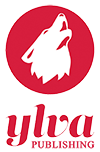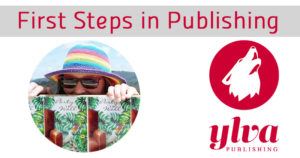Australian lesbian fiction author Cheyenne Blue reveals who she is and the tips and lessons she learned along the way when she started writing.
Tell us five important, funny, or unusual things about yourself
I always wear brightly colored odd socks.
I am qualified to handle and relocate venomous snakes in Australia. If the writing life palls, I’ll set up as a snake catcher.
There is no better breakfast than a toasted peanut butter and tomato sandwich. Crunchy peanut butter, since you ask.
I cut my own hair. I spend the money I save on e-books.
Before I wrote erotica and romance, I was the ghostwriter for four backcountry travel books in the United States.
How did you come to be an author?
In 1999, I stumbled across a literary erotica website, Clean Sheets, and started reading their short stories. I wondered if I could write one. I did and submitted it. They accepted it and I earned my first $50 as an author.
What is the book or writing achievement you are proudest of and why?
I’m very much an in-the-present type person, so the writing achievement I’m proudest of is usually the most recent. Right now, that is my latest novel, Party Wall, which is an enemies-to-lovers novel about two very different people finding love after loss. They’re both following their dreams too, and that’s something I love to write about.
What is the one thing you wish you’d been told when you were starting out?
Write tipsy and edit sober (which is hard when I do most of my writing in my lunchbreaks).
Scrivener (novel-writing software) is the bomb and it’s worth the frustration and long learning curve. Writing a novel using word processing software is simply not worth it.
Remember, too, that every overnight success comes only after years of hard work.
Okay, that’s three things, but I think all of them are equally worth knowing.
What was your biggest mistake and what did you learn from it?
Not recognizing how phenomenal the e-book market was and how quickly it would surge, particularly for the romance and erotica markets that I write in. For the first sixteen years, I wrote solely short stories before making the move to longer work. If I could have my time again, I’d make that move a lot sooner and publish more novels and novellas as e-books.
Part of my hesitation to leap was simple insecurity and fear of failure. I’d only ever written short stories; it was something I knew I could do. Plus, as a rather shy, secretive, and introverted writer, I could hide behind the anthology cover. My name wasn’t plastered on the front of the book (although I sometimes made the blurb).
I’ve forced myself to get over that to a large extent. I edited two anthologies of lesbian erotica, have three collections of my short stories (all published by Ladylit), and I now have one novella and three novels with my name on the cover. There are another two out next year.
I’ve learned, slowly and painfully, that a writer does need to be out in the spotlight to some extent, and that also putting yourself out there means there will be inevitable knockbacks. But, as with everything, you don’t know what you can do until you try, and with an open mind and hard work, things will happen.
I reckon in another few years, overnight success will be mine!
What’s the Australian writing and publishing scene like in lesbian fiction?
Australian publishing is small and tightly held and very, very competitive. For such a big country (think of the forty-eight contiguous US states with the corners rounded down), our entire population is a little bigger than Florida’s and a little smaller than Texas’s. So as a market, we’re tiny. However, e-books have globalized publishing. My stories have been published by small and large presses based in the US, Germany, Hong Kong, the UK, and Canada. Never by an Australian publisher.
I consider myself lucky that Ylva has a reasonably strong presence in the (e-book) Australian market, and also encourages writers to use their own version of English. So my Australian-based novels retain their Aussie spelling, grammar, and slang. That’s important to me. Although Ylva is on the other side of the world, I feel they are supporting Australian writers and Australian fiction.
Who do you most look up to?
My friend Ian. Because he’s nearly seven foot tall.
Aside from the flippant answer, I look up to Jeanette Winterson and Tim Winton for their writing. Then there’s an older friend I’m lucky enough to know for the things she’s done with her life and the goodness, humor, and joy she brings. I hope I’m like Marie when I’m eighty-three.
Where do you see yourself in five years’ time with your writing?
I’ve set myself the goal of writing two romance novels per year. Let’s see how long I can keep it up. I also have a literary mainstream novel tucked away in my head. Whether it gets written is another story.
Cheyenne Blue is the author of the “Girl Meets Girl” series, three standalone Ylva novels with interconnecting characters, Never-Tied Nora, Not-So-Straight Sue, and Fenced-In Felix. Her latest book, Party Wall, came out this year. Cheyenne has lived in the UK, Ireland, the US, and Switzerland, but now writes, runs, makes bread and cheese, and drinks wine by the beach in Queensland, Australia. She’s at www.cheyenneblue.com and on Facebook, Twitter or Instagram.
Ylva’s First Steps in Publishing blog series introduces people from all walks of life in the publishing business. Check out our interviews with US author KD Williams, talking about what she’s learned along her writing journeys, and Best-selling German author Jae, reveals her experience of working full-time as a writer and editor. Also coming in November: Designer Glendon Haddix recalls how he got started, the tools he relies on, and the biggest mistakes cover artists can make. And Ylva publisher Astrid Ohletz lays bare the truth about this stressful but rewarding creative industry. So stay tuned!



0 Comment